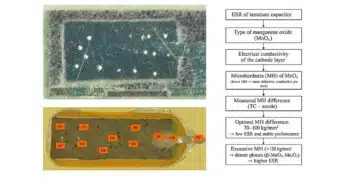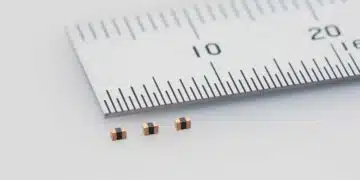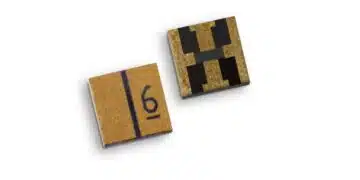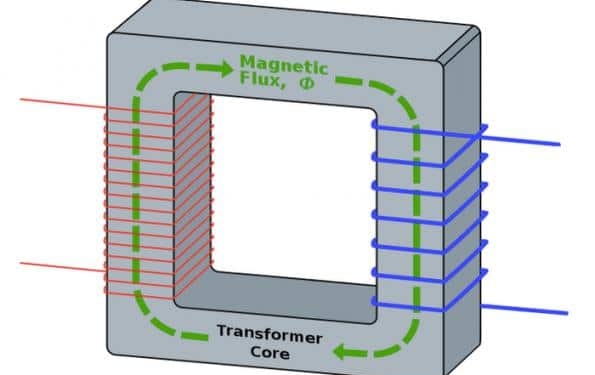source: EETimes article
Steve Subiry, global products manager for magnetics at Eaton, provides an introduction to inductors and transformers and their role in wired power supply. Magnetics are essential components in power topologies but they are perhaps the least understood and often deferred until the very end of the design. With basic knowledge about the functions magnetics perform, engineers can better understand how to select the appropriate components to optimize for power performance. This understanding is critical regardless of the application.
Magnetics are passive components which use an internal magnetic field to change the phase of electrical current. They are commonly divided into two camps – transformers and inductors.
An inductor consists of a wire loop or coil which is used to store energy in a magnetic field. The inductance of any particular component is directly proportional to the number of turns in the coil. This value also depends on the radius of the coil and the type of material used.
Transformers are used to change, filter and stabilize voltage levels. The main purpose of magnetic transformers is to transfer power between two different levels. Conversely, an inductor resists changes in electric current passing through it. Energy is stored in a magnetic field in the coil as long as current flows. When the current flowing through an inductor changes, the magnetic field induces a voltage in the conductor.
Having a basic understanding of how transformers work, what they are used for and where they are used provide designers with a starting point for the decision-making process and the topic of this article.
Transformers provide the following basic functions:
- Energy storage
- Step-up or step-down voltages
- Voltages changes
- Multiple outputs
- Isolation
Transformers do not generate electrical power; they transfer electrical power from one AC circuit to another using magnetic coupling. A transformer is a magnetic component with more than one winding that is used to “transform” voltages and currents applied to the primary winding to other voltages and currents present on the secondary windings.
Internally, the number of windings depends upon the amount of voltage isolation required between the primary and secondary circuits. In a power topology, such as a flyback for example, where primary power is supplied by mains, there will be fewer secondary windings to protect the system against the high voltages coming from the primary.
Before selecting magnetic components, designers should know what type of topology the power supply requires. Looking at the watts and input voltage for each topology will steer the decision making process toward the appropriate transformer.
Designers have five basic converter types to choose from as outlined in the table below.
Once designers determine what function a transformer will serve and what type of converter it will go into, they can then begin the process of choosing the most appropriate components.
The selection process requires knowledge of at least five specifications before a choice is made:
- Input Voltage
- Output Voltage
- Circuit Topology
- Rated Input and Output Current
- Maximum Duty Cycle at Minimum Input Voltage
With a basic overview, how transformers work and the functions they perform, engineers can start the process of selecting the most appropriate components for their system requirements.
However, this process goes beyond finding the right specifications for any system. Designer should evaluate transformer based on reliability requirements pertinent to each specific application such as computing, automotive, industrial, and medical. Understanding latest advancements in magnetic materials and technology processing should be considered to select the best performing transformer or inductor.
Additionally, the breadth of knowledge and experience in power supply engineering and design is another qualification to consider field application support is also important. Vendor should offer a wide range of both off-the-shelf and custom products to ensure that the most vexing design challenges can be anticipated and addressed.
Steve Subiry is magnetics product manager at Eaton’s electronics division. Prior to joining Eaton, Subiry worked in strategic business development and marketing at RF Surgical Systems. Subiry’s 20 years of knowledge in magnetics products spans a wide range of market verticals, including automotive, medical and various commercial segments. Steve holds a bachelor’s degree in Electrical Engineering from Norwich University and post-graduate studies in computer science from the University of Florida.
This article first appeared on EE Times’ Planet Analog website.

































